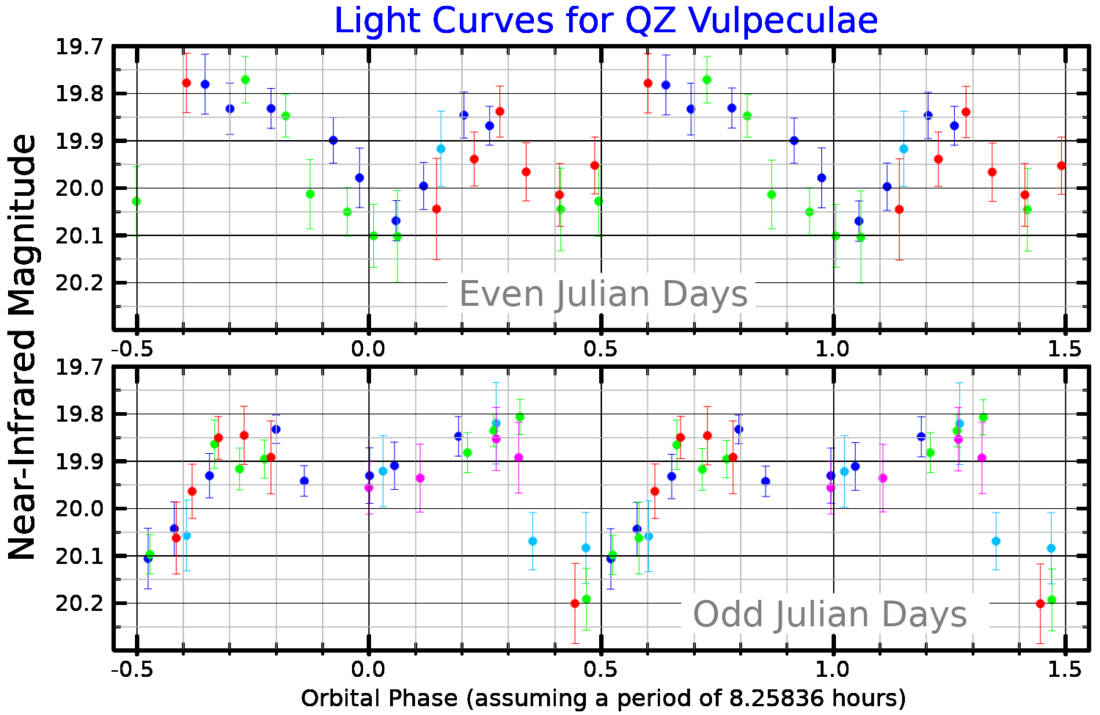Top Qs
Timeline
Chat
Perspective
GS 2000+25
Star in the constellation Vulpecula From Wikipedia, the free encyclopedia
Remove ads
GS 2000+25 is an X-ray binary system in the constellation Vulpecula, consisting of a late K-type star and a black hole. It is also an X-ray nova.
This article needs additional citations for verification. (May 2017) |
Fumiyoshi Makino and the Ginga satellite team discovered GS 2000+25, in April of 1988.[6] A few days later a star, variable in visible light, was identified at its position.[7] It received its variable star designation, QZ Vulpeculae, in 1989.[8]
Remove ads
Properties
Because the black hole is more massive than the companion star, it is the primary of the system. The black hole has a mass of about 5 solar masses while the companion has a mass of about 0.5 solar masses. Because the companion star has a low mass, the system is a low-mass X-ray binary.[9]
See also
References
Wikiwand - on
Seamless Wikipedia browsing. On steroids.
Remove ads

